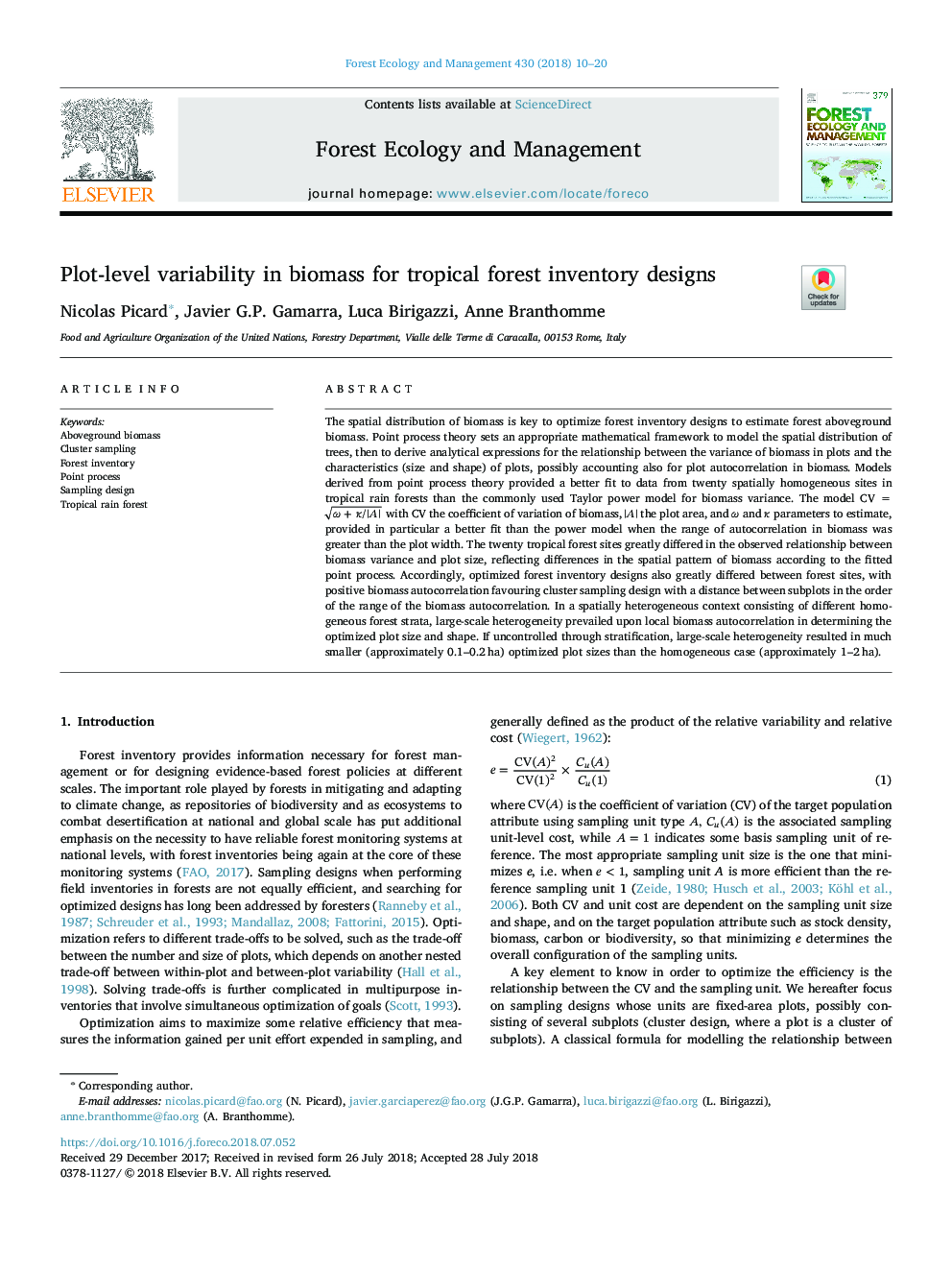| Article ID | Journal | Published Year | Pages | File Type |
|---|---|---|---|---|
| 6541391 | Forest Ecology and Management | 2018 | 11 Pages |
Abstract
The spatial distribution of biomass is key to optimize forest inventory designs to estimate forest aboveground biomass. Point process theory sets an appropriate mathematical framework to model the spatial distribution of trees, then to derive analytical expressions for the relationship between the variance of biomass in plots and the characteristics (size and shape) of plots, possibly accounting also for plot autocorrelation in biomass. Models derived from point process theory provided a better fit to data from twenty spatially homogeneous sites in tropical rain forests than the commonly used Taylor power model for biomass variance. The model CV = Ï+κ/|A| with CV the coefficient of variation of biomass, |A| the plot area, and Ï and κ parameters to estimate, provided in particular a better fit than the power model when the range of autocorrelation in biomass was greater than the plot width. The twenty tropical forest sites greatly differed in the observed relationship between biomass variance and plot size, reflecting differences in the spatial pattern of biomass according to the fitted point process. Accordingly, optimized forest inventory designs also greatly differed between forest sites, with positive biomass autocorrelation favouring cluster sampling design with a distance between subplots in the order of the range of the biomass autocorrelation. In a spatially heterogeneous context consisting of different homogeneous forest strata, large-scale heterogeneity prevailed upon local biomass autocorrelation in determining the optimized plot size and shape. If uncontrolled through stratification, large-scale heterogeneity resulted in much smaller (approximately 0.1-0.2â¯ha) optimized plot sizes than the homogeneous case (approximately 1-2â¯ha).
Keywords
Related Topics
Life Sciences
Agricultural and Biological Sciences
Ecology, Evolution, Behavior and Systematics
Authors
Nicolas Picard, Javier G.P. Gamarra, Luca Birigazzi, Anne Branthomme,
